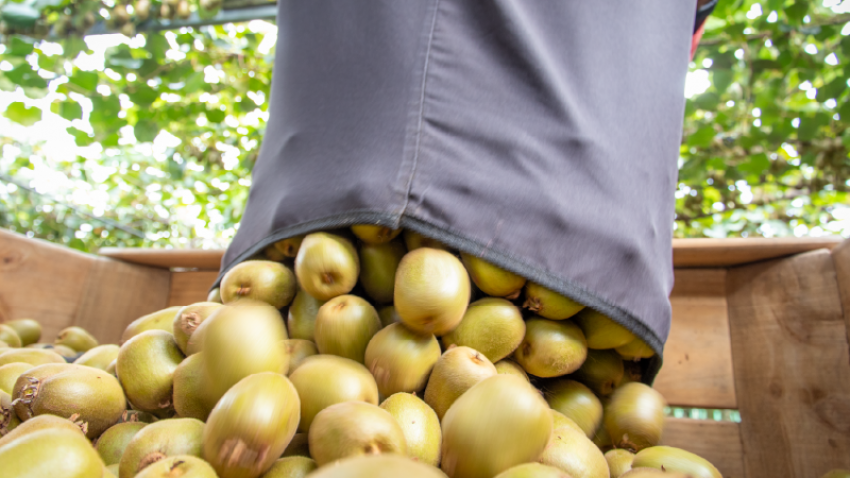You are here
Back to topZespri Responds To Weather Challenges With A Resilience Plan

A warm and wet winter followed by late frosts in some areas of the North Island, New Zealand’s most agriculturally developed region, has affected the upcoming kiwifruit harvest. The quality of fruit is now predicted to be significantly lower compared to June and August expectations, which will cut into profits. In June, Zespri estimated returns for the best-selling SunGold variety at NZ$10.25 to NZ$11.75 (US$6.5 to US$7.5) per tray. In then revised the estimates down to NZ$10.02 (US$6.4) in August and again to NZ$9.81 (US$6.2) in November.
According to Zespri chairman Bruce Cameron, the industry continues assessment of fruit quality. November’s revised profit estimate meanwhile reflects a higher rate of quality problems than the industry originally anticipated. Zespri functions as a cooperative of growers who own and control the company based on the number of purchased shares.
Lower returns are expected to hit Zespri’s bottom line: the forecast for corporate net profit for the year ending March 2023 is between NZ$225 million and NZ$235 million (US$143 million to US$149 million), a substantial drop from a NZ$361 million (US$229 million) profit in 2021/22.
In order to help growers mitigate the effects of the changing weather, the company at the end of November released its first ever climate change adaptation plan, Adapting to Thrive in a Changing Climate. The plan responds to the data published by Zespri in its report on climate change risks and opportunities in 2021 and consists of over 40 actions to be gradually implemented by the growers’ consortium. Measures defined in the document aim to future-proof kiwifruit cultivation, ensure fruit quality, manage supply, and guarantee the industry’s financial security.
Speaking about the plan, Zespri’s chief grower, industry and sustainability officer, Carol Ward, highlighted the importance of growers adopting new practices in order to build climate-resilient production.
Among the practices mentioned, “efficient water use, investing in climate-resilient cultivars, developing a future-focused climate research program, recognizing climate impacts in industry planning, assessing the effects of climate change on productivity and profitability, and lessening exposure to carbon costs by reducing emissions” are crucial for Zespri’s business as they will ensure steady returns and stability in the future.
According to Ward, producers have already started adjusting their growing practices in order to retain and later increase the yields of high-quality fruit. “This can be seen in the installation by growers of hail netting, the development and maintenance of shelterbelts to help protect orchards from severe wind events and the use of irrigation to prevent vines from experiencing water stress or frost, with post-harvest facilities also adjusting the packing of fruit in light of warmer temperatures,” she said.
A review of the plan and progress against it is scheduled for 2025, following the expected update of Zespri’s climate change risks and opportunities report to be published in 2024.
Image: Unsplash















Add new comment